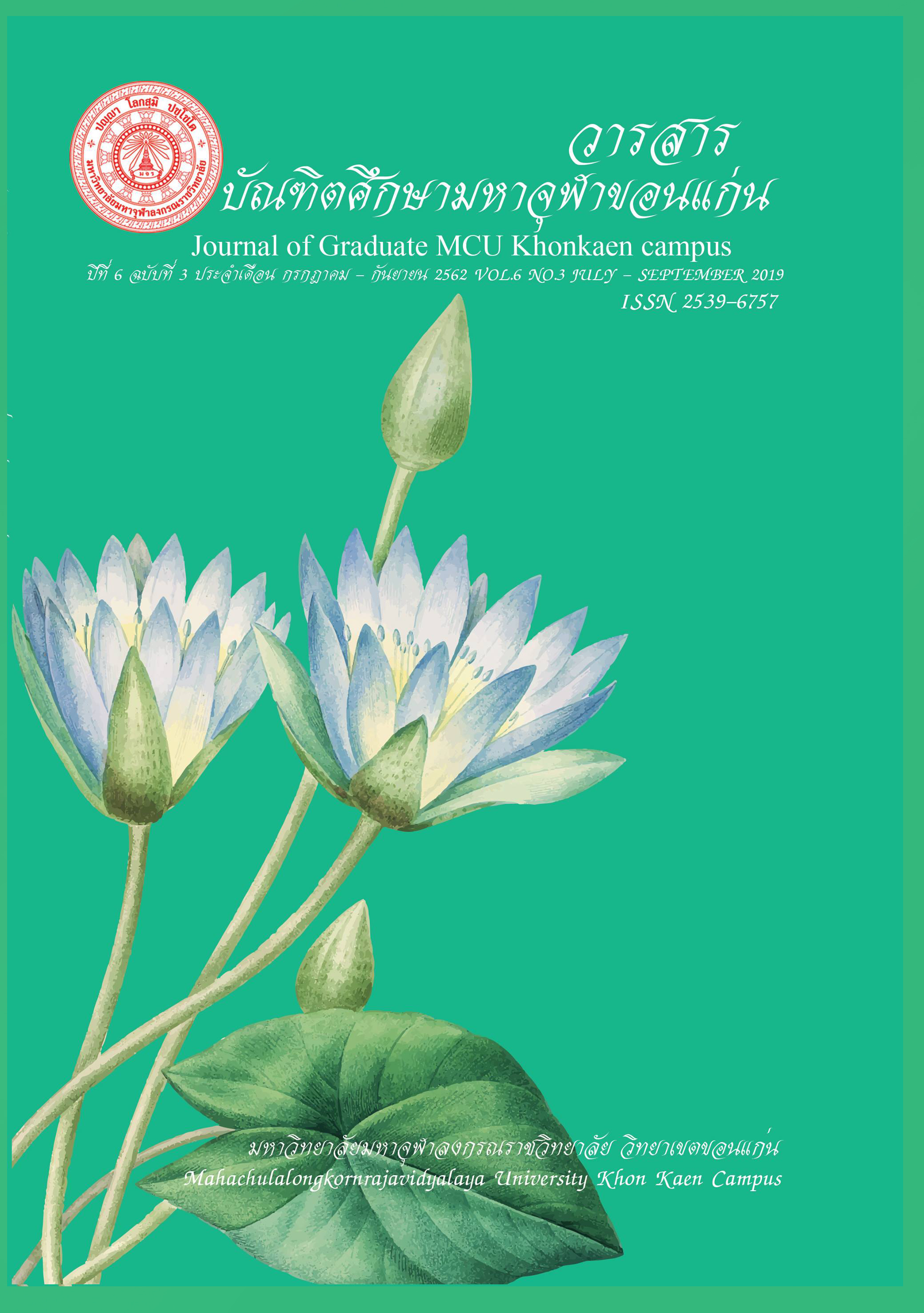The Strategies for Educational institutions Administration by Using the Professional learning Community Concept Under the Office of Secondary Education Service Area 25
Main Article Content
Abstract
The purposes of this research were: 1)to study the present situation and desirable condition of educational institutions administrationby using the professional learning community concept under the office of secondary education service area 25 and 2) to develop the strategies for educational institutions administration by using the professional learning community concept under the office of secondary education service area 25. The samples used in this research consisted of 351 persons including 16 educational institutions administrators and 335 teachers in educational institutions under the office of the secondary education service area 25. The sample size was determined by R.V. Krejcie & D.W. Morgan using stratified random sampling. The research instruments were 5-level rating scale questionnaires with Index of Item–Objective Congruence (IOC) between 0.80-1.00 and reliability at 0.98. The statistics used for data analysis included Mean, Standard Deviation, Reliability and PNI Modified.
The research results were found that:
1.The present situation of educational institutions administrationby using the professional learning community concept under the office of secondary education service area 25 in overall was rated at a moderate level, when considering in each aspect, general administration was rated at a high level, followed by personnel administration and academic administration respectively, while budgeting administration was rated at the lowest level. The desirable condition of educational institutions administration in overall was rated at highest level, when considering in each aspect, it was rated at the highest level in all aspects with budgeting administration, followed by personnel administration and general administration respectively, while academic administration was rated at the lowest level.
- The strategies for educational institutions administration by using the professional learning community concept under the office of secondary education service area 25 were as follows: Goal: Creating a desirable work together consisted of 4 strategies, 23 tactics, 23 indicators. The 1st strategy was to change the budgeting administration by using the professional learning community concept. Goal: Responding to the function of educational administration consisted of 5 tactics and 5 indicators. The 2nd strategy was development of academic administrationby using the professional learning community concept. Goal: Enhancing achievement and developing learners continually included 7 strategies and 7 indicators. The 3rd was reforming personnel administration by using the professional learning community concept. Goal: Responding the function of educational institutions under the principle of administration with equity, stability, morality, justice and opportunity for development equally both in quantity and quality. It consisted of 5 tactics and 5indicators. The 4th strategy was strengthening the general administrationby using the professional learning community concept. Goal: service, support, promotion, coordination, public relation, readiness for facilities and information technology system in educational institutions and community responding to learning activities consisted of 6 tactics and 6 indicators.
Article Details
References
2) 2002 and No. 3 (2010):Bangkok: Office of the Education Council.
_______. (2007). Guidelines for Decentralization of Administration and Educational Management to the Board: Office of Educational Service Area and Educational Institutions according to Ministerial Regulations prescribing rules and regulations Decentralization methods, administration and educational management.
Chalermchartmekdaeng, et al.(2015). Guidelines for Developing a Learning Community of
Private Education Institutions: Buabandit Journal of Educational Administration,
Ubon Ratchathani Rajabhat University. 15th Year, Special Vol. (October - December 2015).
Chirasaya Phetchuungmarka. (2017). Strategies for Using Change Leadership in Private Vocational Institutions Administration, Khon Kaen: Doctor of Philosophy, Program in Educational administration, Faculty of Education, North Eastern University.
Office of the National Economic and Social Development Board. (2560). Summary of Significance of National Economic and Social Development Plan, 12th Vol., 2017- 2564: Office of National Economic and Social Development Board.
Search from http://www.nesdb.go.th/ewt_news.php?nid=6420 (18 March 2017).
Rewadee Chaichaowarat. (2015). Way to Create Teachers to Students: Professional Learning Communities: Documentation of concepts and guidelines for teacher professional development for the project working group, mechanisms development and guidelines for supporting the professional learning community to develop learners. Bangkok: Office of Social Learning and Youth quality Promotion.
Secondary Educational Service Area Office 25. (2016). Needs Assessment Research: Searched on 10 November 2017.
Suwimol Wongvan. (2007).Needs Assessment Research: Bangkok: Chulalongkorn University Press.
Wichian Rooyuenyong, et al. (2016). Administration according to Good Governance Principles of Schools under the Secondary Educational Service Area Office 25: Journal of Education Khon Kaen University, 39th Year, Vol. 2 April 2016.
Woralak Chukamnerd. (2014). A Model of a Professional Learning Community of Teachers Toward 21st Century Learning of Schools in Thailand: Academic Service Journal, Prince of Songkla University, Pattani Campus. Vol. July-December 2014.
Vicharn Panich. (2012). Framework for the 21st Century Learning. Bangkok: Sod-Si Saritwong Foundation.

